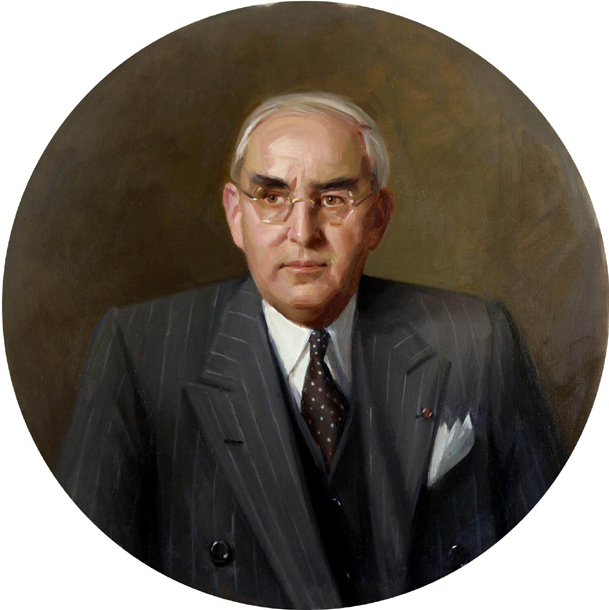
| Title | Arthur H. Vandenberg |
| Artist/Maker | Michael Shane Neal |
| Date | 2004 |
| Medium | Oil on canvas |
| Dimensions | h. 25.25 x w. 25.875 in. (h. 64.135 x w. 65.7225 cm) |
| Credit Line | U.S. Senate Collection |
| Accession Number | 32.00042.000 |
In 1999 the Senate adopted S. Res. 241 directing the Senate Commission on Art to recommend two outstanding senators whose portraits would be placed in the Senate Reception Room of the U.S. Capitol. The resolution called for the selection of “legislators with a deep appreciation for the Senate, who will serve as role models for future Americans.” This was the first commission of its kind since 1957, when a special committee chaired by Senator John F. Kennedy unanimously selected five senators, today known as the “Famous Five,” whose portraits were added to the walls of the Senate Reception Room. The 1999 competition was limited to the approximately 1,500 senators whose service ended prior to 1979 and to those who were no longer living. The search focused particularly on the mid-20th century, a period in which the Senate played a significant role in both foreign and domestic policy as the nation developed into a major world power.
After careful consideration, the commission made its selection: Senator Arthur H. Vandenberg of Michigan and Senator Robert F. Wagner of New York. Their portraits, along with the “Famous Five,” occupy trompe l’oeil rondels and ornamental plaster ovals that remained unfilled after the mid-19th-century decoration of the room.
The posthumous portrait of Arthur H. Vandenberg depicts the senator as he appeared in office in the first half of the 20th century. During the 1930s, the isolationist Vandenberg was determined to keep the United States out of another world war, but the 1941 Japanese attack on Pearl Harbor caused him to rethink his position. In January 1945, he gave a dramatic floor speech calling on America to assume the responsibilities of world leadership. Vandenberg also endorsed the creation of the United Nations and spent the remainder of his career generating support for the Truman Doctrine, the Marshall Plan, and NATO. He died in office on April 18, 1951.
Artist Michael Shane Neal became one of the youngest artists commissioned by the U.S. Senate when, at age 32, he was chosen to execute the portrait of Vandenberg for the south wall in the Senate Reception Room. He received his degree in 1991 from David Lipscomb University in Nashville, Tennessee. Since beginning a career as an artist at age 21, Neal has completed more than 500 portraits of prominent figures in government, academia, and business, including those of Senators Robert C. Byrd and William H. Frist, also in the Senate collection.
Senator Arthur Vandenberg (1884-1951) of Michigan delivered a celebrated "speech heard round the world" in the Senate Chamber on January 10, 1945, announcing his conversion from isolationism to internationalism. In 1947, at the start of the Cold War, Vandenberg became chairman of the Senate Foreign Relations Committee. Asserting that we must stop “partisan politics at the water's edge," he cooperated with the Truman administration in forging bipartisan support for the Truman Doctrine, the Marshall Plan, and NATO. As recalled by Francis Wilcox, the first chief of staff of the Foreign Relations Committee, Vandenberg's Senate career stands as a monument to bipartisanship in American foreign policy. Vandenberg died in 1951, but his legacy continues.